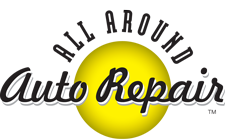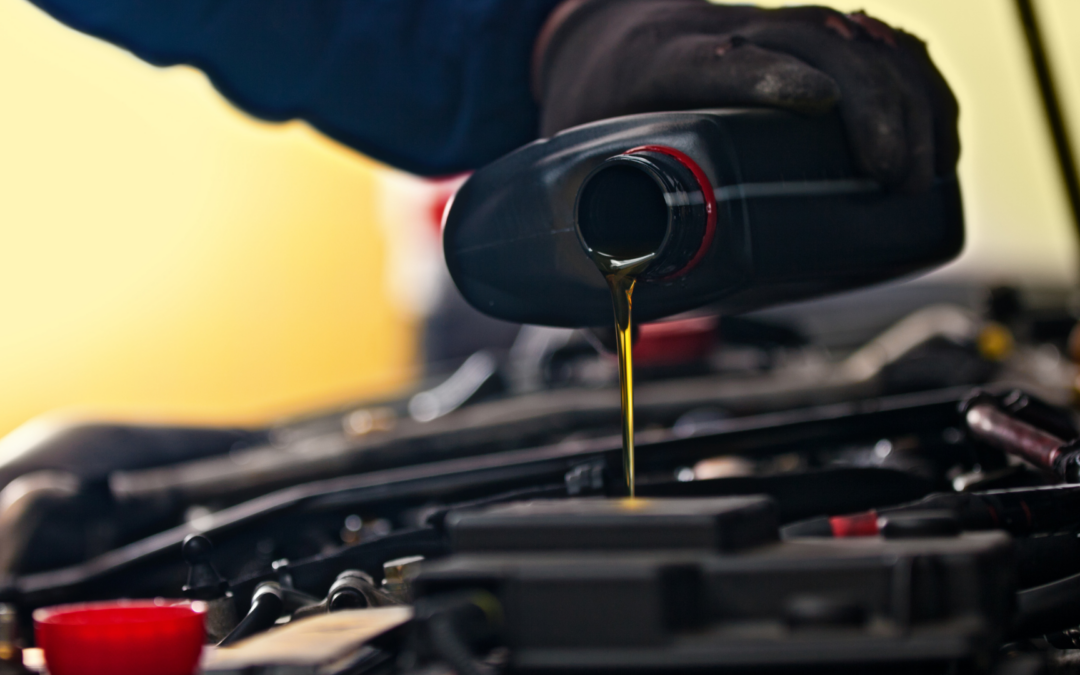When people think of maintaining their car, the first thing that often comes to mind is an oil change. While oil changes are undoubtedly critical to your engine’s health, they are just one piece of the puzzle. A well-rounded maintenance routine involves more than simply replacing oil at regular intervals; it includes a series of inspections, tune-ups, and servicing tasks that work together to keep your vehicle running safely, efficiently, and reliably.
In this blog, we’ll go beyond the basic oil change and explore the full scope of scheduled maintenance. We’ll highlight how tasks like tune-ups, brake checks, tire rotations, wheel alignments, and air conditioning servicing fit into a preventative care strategy. By following your manufacturer’s recommended maintenance schedule, you can extend your car’s lifespan, improve its performance, and save money in the long run.
The True Purpose of Scheduled Maintenance
Scheduled maintenance is about more than avoiding breakdowns—it’s about proactive care. Your owner’s manual outlines intervals for various services and inspections based on mileage or time. Following these guidelines ensures that wear-and-tear items are replaced before they fail and that key components remain in top shape. Instead of waiting until something goes wrong, you stay one step ahead, preventing costly repairs and inconvenience.
Regular maintenance also helps maintain strong resale value. Potential buyers pay attention to maintenance records, viewing them as proof that the car has been well cared for and is less likely to have hidden issues.
Beyond the Oil Change: A Closer Look at Key Services
1. Tune-Ups: Bringing Everything Back in Sync
A tune-up is like a checkup for your engine’s health. During a tune-up, mechanics will inspect or replace components such as spark plugs, ignition coils, and air filters. They’ll also verify that the engine’s timing and idle settings are correct.
Why It Matters:
Spark plugs that are worn or fouled can cause misfires, reduced fuel efficiency, and sluggish acceleration. By replacing them as part of a scheduled tune-up, you restore the engine’s optimal combustion process, improving both power and efficiency. A properly tuned engine runs more smoothly and emits fewer pollutants, making for a cleaner and more pleasant driving experience.
2. Brake Checks: Ensuring Stopping Power
Brakes aren’t just about safety—they’re a legal requirement and a critical component of your car’s performance. Regular brake checks catch worn pads, warped rotors, and other issues before they compromise your ability to stop quickly and safely.
Why It Matters:
Worn brake pads can lead to metal-on-metal contact, damaging rotors and escalating repair costs. Even a slight decrease in braking efficiency could increase stopping distance, putting you and others at risk. Regular brake inspections and timely replacements help maintain safe braking performance and prevent expensive overhauls later on.
3. Tire Rotations and Alignments: Achieving Even Wear
Tire maintenance goes beyond checking inflation. Tire rotations involve swapping the front and rear tires (and sometimes crossing sides), ensuring they wear evenly. Wheel alignments ensure that all four tires meet the road at the correct angle.
Why It Matters:
Even tire wear extends the lifespan of your tires, saving you money on replacements. Proper wheel alignment improves handling, fuel efficiency, and ride comfort. By incorporating tire rotations and alignments into your maintenance schedule, you ensure that every mile you drive is smoother, safer, and more cost-effective.
4. Air Conditioning and Climate Control: Comfort and More
Your car’s air conditioning system does more than keep you comfortable. It also helps defog windows for better visibility and contributes to overall driver alertness. Regular A/C servicing includes checking refrigerant levels, cleaning the system’s condenser, and inspecting hoses and belts.
Why It Matters:
Without proper maintenance, A/C systems can develop leaks or fail completely. Not only does that make summer drives unbearable, but it also may indicate a broader issue—like a worn drive belt powering multiple components. Keeping your A/C system in good shape ensures comfort, visibility, and may even help preserve related engine components.
How Following the Manufacturer’s Schedule Saves Money
- Preventing Major Failures:
Skipping routine maintenance can turn a small issue—like worn spark plugs—into a significant engine problem over time. By catching minor wear and tear early, you prevent more expensive repairs that stem from neglected components. - Improved Fuel Efficiency:
A well-tuned engine, proper tire inflation, and aligned wheels all contribute to better fuel economy. Over months and years, these small efficiency gains add up, putting more money back in your pocket instead of at the gas pump. - Extended Lifespan of Parts:
Replacing a $20 air filter on time is far cheaper than dealing with engine damage caused by dust and debris entering the combustion chamber. Similarly, timely brake pad changes prevent rotor damage, and prompt fluid replacements safeguard the cooling system and transmission. - Higher Resale Value:
Buyers value cars with documented maintenance records. A vehicle that has been meticulously cared for often commands a higher resale price, making every maintenance appointment an investment in your car’s future worth.
The Role of Diagnostics and Expert Advice
Many modern vehicles offer advanced diagnostic systems that track oil life, monitor tire pressure, and even predict when maintenance tasks are due. Combining this technology with professional input from a trusted mechanic ensures you stay on track.
Mechanics can spot subtle signs of trouble—like a slight wheel misalignment, unusual brake pad wear, or irregular engine idling—that might not trigger dashboard alerts. Their expertise complements the data your car’s computer provides, giving you a complete picture of your vehicle’s condition.
Tips for Sticking to a Maintenance Schedule
- Read the Owner’s Manual:
Your manual provides recommended intervals for services like fluid changes, tune-ups, and inspections. This tailored guidance ensures you follow the exact schedule designed for your specific make and model. - Use a Calendar or App:
Set reminders on your phone or mark a calendar for upcoming services. Many auto repair shops also offer maintenance reminders via email or text, helping you stay organized. - Establish a Relationship with a Trusted Mechanic:
Working with the same repair shop over time means the technicians get to know your vehicle’s history and can provide personalized advice. This relationship can help you spot patterns, anticipate issues, and keep your car running optimally. - Don’t Wait for Symptoms:
If you wait until you hear squealing brakes or see smoke from under the hood, you’re already dealing with a bigger problem. Following the prescribed schedule allows you to avoid these unpleasant surprises.
Overcoming Common Myths About Maintenance
- Myth: “I’ll Just Wait Until Something Feels Wrong.”
Waiting until your car “feels off” can lead to costly repairs. By the time you notice an issue, damage may already be extensive. Preventive maintenance catches these problems early and keeps repair costs low. - Myth: “Only Oil Changes Matter.”
While oil changes are crucial, they’re just one part of a holistic maintenance approach. Neglecting other tasks like brake checks, filter replacements, and fluid changes can shorten your car’s lifespan. - Myth: “Scheduled Maintenance is Too Expensive.”
While routine services have a cost, this expense is small compared to the potential price tag of major repairs or early component failure. In the long run, scheduled maintenance is a money-saving strategy.
Embrace a Proactive Mindset
Your car is a significant investment—one that can serve you for many years if you treat it well. Scheduled maintenance is about more than just preventing breakdowns; it’s about enhancing your driving experience, optimizing fuel efficiency, and preserving resale value. By going beyond the oil change and embracing the full scope of preventive care—tune-ups, brake checks, tire rotations, wheel alignments, and more—you set your vehicle up for a longer, healthier life.
At All Around Auto Repair, our skilled technicians can guide you through every step of maintaining your vehicle according to its unique schedule. Whether you’re unsure how often to rotate your tires or when to replace your fuel filter, we’re here to provide expert advice and reliable service.
Conclusion
Think of scheduled maintenance as a partnership between you, your car, and your mechanic. By following the manufacturer’s guidelines and staying proactive, you help ensure that every component of your vehicle works harmoniously. The result? A smoother ride, fewer surprises, and the satisfaction of knowing you’re maximizing your car’s value and longevity.
Embrace a comprehensive approach to maintenance. Your car—and your wallet—will thank you.
Contact Us Today:
- Location: 1244 Central Ave, Santa Rosa, CA 95401
- Phone: (707) 837-0646
- Website: All Around Auto Repair






